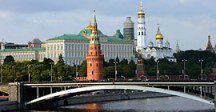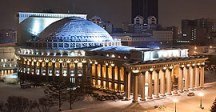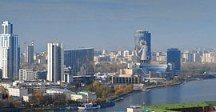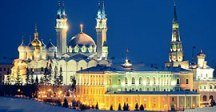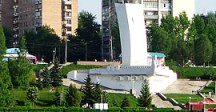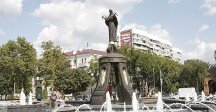Map of Bryansk
Detailed interactive map of Bryansk. Map of Bryansk with streets and numbers of houses. Satellite map of Bryansk with sights of the city.
The change between the satellite map of Bryansk and the schematic one is made in the lower left corner of the interactive map.
Bryansk
The population of the city Bryansk: 399,579 people (2021)
The date of foundation of Bryansk: 985.
The telephone code of the city Bryansk: +7 4832
Car code of the city Bryansk: 32
Postal code of the city Bryansk: 241000
Bryansk is a Russian city on the banks of the Desna River. It is the cultural and administrative center of the Bryansk region. It is here that the main regional attractions are concentrated. For example, Pokrovskaya Mountain, considered the historical heart of Bryansk. The oldest wooden building in the city, the Oak Kremlin, stands on it.
Chashin Kurgan is also one of the oldest historical monuments. There you can see the ruins of the first settlements on the territory of the city, which belong to the 7th century. In this city, a lot of attention is paid to the memory of those who fell in battle with the Nazis. The main Bryansk memorial, the Mound of Immortality, which is made in the form of a five–pointed star, reminds of the war years. It is a symbol not only of Bryansk, but also of the region.
What to see in Bryansk
The Bryansk Literary Museum on Fokina Street is located in a 19th-century mansion dedicated to the literary achievements of the residents of Bryansk. Among his exhibitions are expositions dedicated to the literary traditions of ancient Russia and the 19th century poets Alexei Konstantinovich Tolstoy and Fyodor Tyutchev, both of whom were born in the territory of the present Bryansk region. One room is even dedicated to Alexei Tolstoy's most famous character, Kozma Prutkov.
The Bryansk Art Museum was established in 1968. The museum functions as an exhibition center, its permanent exhibitions contain more than 9,000 exhibits. His exhibitions are devoted to folk art, Russian painting of the 19th and 20th centuries, sculptures, icons, glass and ceramics.
The Bryansk State Regional Museum of Local Lore has existed since 1921, but it moved to a massive monumental building on Partizanskaya Square only in 1984. His exhibits dedicated to the natural world include a mammoth skeleton, geological exhibits and stuffed animals in dioramas of their national habitats. The history section is devoted to the role of Bryansk residents in the Battle of Kulikovo Field, the Northern Wars, the Napoleonic War and World War II.
Monument to Fyodor Tyutchev. The famous poet and diplomat Fyodor Tyutchev was born in 1803 in the village of Ovstug, located in the territory of the present Bryansk region. This monument to him was erected in 2003. The statue stands in front of the majestic building of the Bryansk Regional Theater named after Alexei Tolstoy.
Monument to the internationalist soldiers. Next to the Bryansk Regional Yuri Gagarin Palace of Children's and Youth Creativity there is a memorial to the internationalist soldiers who died in the Afghan and Chechen wars. It depicts three soldiers in the midst of a battle. One of the soldiers was wounded, and he is being carried by two of his comrades. The names of Bryansk soldiers who died in Afghanistan and Chechnya are engraved on the pedestal.
The monument to the liberators of Bryansk was unveiled on Partizanskaya Square in 1966 and is dedicated to both ordinary soldiers from Bryansk and 60,000 or more partisans who operated in the Bryansk forests surrounding the city. In the central part of the monument there is an eternal flame and a victorious soldier standing in front of a giant pedestal with the inscription "For our Soviet Homeland".
The Church of the Resurrection dates back to 1741, when it was built as the cathedral of the Resurrection Convent, founded in the 16th century.
The monument to Vladimir Lenin is located on Lenin Square about halfway up Lenin Avenue. The statue was unveiled in 1970 and is eight meters high, including the pedestal. The building behind Lenin is the City Administration, and to the left of it is the Administration of the Bryansk region.
Pokrovskaya Mountain. According to archaeological data, it is believed that Bryansk dates back to 985 and celebrated its millennium in 1985. The memorial, located on Pokrovskaya Hill, consists of several parts. The obelisk, consisting of three high arches, has a figure of a woman holding a hammer and sickle on top, and a statue of a soldier on each arch.
The Gorno-Nikolsky Monastery was founded in 2002 around the Church of St. Nicholas on the Hill, from which it got its name. The church of St. Nicholas itself dates back to 1751, when it was built at the expense of local merchants instead of an ancient wooden church. Also on the territory of the monastery is the bishop's house, which was built in 1870 and includes the church of St. Sergius.
Pokrovsky Cathedral is the oldest preserved religious building in Bryansk, built in 1698 at the expense of a local landowner. The cathedral has the shape of a standard five-domed building, but with an additional two-storey building attached to the side.
The Chernobyl Memorial. As a result of the Chernobyl disaster in 1986, many people who now live in the region were sent to eliminate the consequences of the accident and suffered from the effects of radiation poisoning. This memorial was opened in 2006 on the 20th anniversary of the tragedy and consists of a giant ball with a huge crack running through the center.
Monument to the city of Military Glory. In 2010, Bryansk was awarded the title of the city of Military Glory for the heroism of its inhabitants and partisans during World War II and a monument was erected.
The mound of immortality. One of the symbols of Bryansk is the Mound of Immortality, 12 meters high. It was established in 1968 in memory of the residents of Bryansk who died defending the freedom and independence of the Motherland during World War II. At the top of the mound there is a giant star decorated with bright mosaics.
The Tkachev Brothers Museum. This museum is dedicated to the work of brothers Andrey and Sergei Tkachev, who were both named Honored Artists of the USSR and both were born in the Bryansk region. When the museum was opened in 1995, both brothers donated a total of more than 500 samples of their work, which are now on display here.
The Petro-Pavlovsky Convent was founded by Prince Oleg of Bryansk (later canonized as Saint Oleg of Bryansk) in 1275. About half a century later, most of his lands were confiscated by Empress Catherine the Great and finally dissolved in 1830. However, soon after, in 1836, it was reopened as a convent on the initiative of a group of local merchants.
The Svensky Monastery was founded in 1288 by Prince Roman Mikhailovich of Bryansk, who dedicated it to the Assumption of the Virgin Mary.
Transport in Bryansk
The Bryansk-1-Orlovsky railway Station is located relatively far from the city center on the other bank of the Desna River. Trolleybus No. 1 from the railway station takes you to the central Partizanskaya Square, which is the beginning of the main street of Bryansk - Lenin Avenue. Station address: 2A Rechnaya Street.
Popular destinations in Russia: Moscow and the Eagle. Popular international destinations: Brest, Kiev, Chisinau, Lviv, Budapest, Odessa, Sofia.
Commuter trains run in the direction of Hukovka/Roslavl, Suzemka/Komarich, Dyatkovo, Sukhinichi, Unecha and Orel.
Bryansk Bus Station is located close to the main street of the city - Lenin Avenue, about 500 meters from Partizan Square. Trolleybus No. 1 or No. 6 runs between the bus and railway stations. The address of the bus station is 1A Peresvet Street.
Popular destinations in Russia: Belgorod, Kaluga, Kirov, Lipetsk, Moscow, Orel, Ryazan, St. Petersburg, Smolensk and Tula. Regional destinations: Klintsy and Novozybkov. International destinations: Gomel and Kiev.
Bryansk is connected to Moscow by many trains and buses. It is also well connected to the Eagle by both commuter trains and buses. Many long-distance trains connect Moscow with Bryansk, usually trains run from Moscow to Ukraine. Trains to Bryansk depart from Kievsky railway station in Moscow and arrive at the Bryansk-1-Orlovsky railway station.
There are usually 5 direct buses running daily between Moscow and Bryansk, plus several additional transit buses that stop in Bryansk.
Commuter trains connect Bryansk with Orel, and on weekdays there are usually 4 trains per day, and on weekends there is 1 additional train. Commuter trains to Oryol depart from the Bryansk-1-Oryol Railway station.
Sights of Bryansk
Svensky Monastery, Bryansk forest, Kurgan of Immortality, Bryansk Museum of Local Lore, Trinity Cathedral, Bryansk Regional Drama Theater named after A. K. Tolstoy, Memorial complex "Partizanskaya Polyana", Church of the Resurrection of Christ, Pokrovsky Cathedral, Svensky Holy Dormition Monastery, Park Museum named after A.K. Tolstoy, Regional Theater for Young Spectators, Memorial complex "Hatsun", The Mansion of the merchant Avraamov, the Holy Spring of the Holy Trinity, Karl Marx Square, a Monument to the victims of Chernobyl.
The largest cities in Russia:
2024 © Russia-Karta.ru
